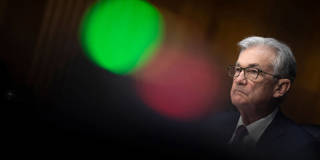There are four reasons to worry that the latest banking crisis could be systemic. For many years, periodic bouts of quantitative easing have expanded bank balance sheets and stuffed them with more uninsured deposits, making the banks increasingly vulnerable to changes in monetary policy and financial conditions.
CHICAGO – The recent bank collapses in the United States seem to have an obvious cause. Ninety percent of the deposits at Silicon Valley Bank (SVB) and Signature Bank were uninsured, and uninsured deposits are understandably prone to runs. Moreover, both banks had invested significant sums in long-term bonds, the market value of which fell as interest rates rose. When SVB sold some of these bonds to raise funds, the unrealized losses embedded in its bond portfolio started coming to light. A failed equity offering then set off the run on deposits that sealed its fate.
But four elements of this simple explanation suggest that the problem may be more systemic. First, there is typically a huge increase in uninsured bank deposits whenever the US Federal Reserve engages in quantitative easing. Because it involves buying securities from the market in exchange for the central bank’s own liquid reserves (a form of cash), QE not only increases the size of the central-bank balance sheet, but also drives an expansion in the broader banking system’s balance sheet and its uninsured demandable deposits.
We (along with co-authors) called attention to this under-appreciated fact in a paper presented at the Fed’s annual Jackson Hole conference in August 2022. As the Fed resumed QE during the pandemic, uninsured bank deposits rose from about $5.5 trillion at the end of 2019 to over $8 trillion by the first quarter of 2022. At SVB, deposit inflows increased from less than $5 billion in the third quarter of 2019 to an average of $14 billion per quarter during QE. But when the Fed ended QE, raised interest rates, and switched quickly to quantitative tightening (QT), these flows reversed. SVB started seeing an increase in outflows of uninsured deposits (some of which were coincident with the downturn in the tech sector, as the bank’s stressed clients started drawing down cash reserves).

CHICAGO – The recent bank collapses in the United States seem to have an obvious cause. Ninety percent of the deposits at Silicon Valley Bank (SVB) and Signature Bank were uninsured, and uninsured deposits are understandably prone to runs. Moreover, both banks had invested significant sums in long-term bonds, the market value of which fell as interest rates rose. When SVB sold some of these bonds to raise funds, the unrealized losses embedded in its bond portfolio started coming to light. A failed equity offering then set off the run on deposits that sealed its fate.
But four elements of this simple explanation suggest that the problem may be more systemic. First, there is typically a huge increase in uninsured bank deposits whenever the US Federal Reserve engages in quantitative easing. Because it involves buying securities from the market in exchange for the central bank’s own liquid reserves (a form of cash), QE not only increases the size of the central-bank balance sheet, but also drives an expansion in the broader banking system’s balance sheet and its uninsured demandable deposits.
We (along with co-authors) called attention to this under-appreciated fact in a paper presented at the Fed’s annual Jackson Hole conference in August 2022. As the Fed resumed QE during the pandemic, uninsured bank deposits rose from about $5.5 trillion at the end of 2019 to over $8 trillion by the first quarter of 2022. At SVB, deposit inflows increased from less than $5 billion in the third quarter of 2019 to an average of $14 billion per quarter during QE. But when the Fed ended QE, raised interest rates, and switched quickly to quantitative tightening (QT), these flows reversed. SVB started seeing an increase in outflows of uninsured deposits (some of which were coincident with the downturn in the tech sector, as the bank’s stressed clients started drawing down cash reserves).